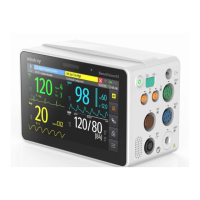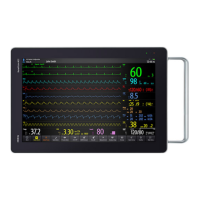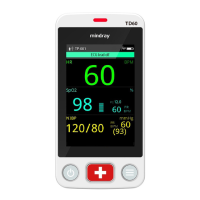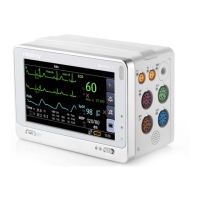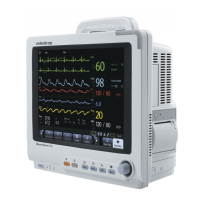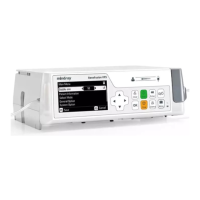11 - 16 BeneVision N Series Patient Monitor Operator’s Manual
The following figure illustrates the conditions under which PVC alarms will be generated if V-Tach PVCs is set to
6, V-Tach Rate is set to 130, V-Brady PVCs is set to 5, and V-Brady Rate is set to 40.
■ If both V-Tach PVCs and V-Tach Rate are greater than or equal to the limits, a V-Tach alarm is generated.
■ If the number of consecutive PVCs is lower than the V-Tach PVCs limit (6) but greater than 2, and PVC rate is
greater or equal to the V-Tach Rate limit (130), a Nonsus V-Tach alarm is generated.
■ If the number of consecutive PVCs is greater than or equal to the V-Brady PVCs limit (5), and PVC rate is
lower than the V Brady limit (40), a Vent Brady alarm is generated.
■ If both the V-Brady PVCs and V-Brady Rate are lower than the limits, but V-Brady PVCs is greater than 2, a
Run PVCs alarm is generated.
■ If the V-Brady PVCs and V-Brady Rate are greater than or equal to limits, but the Vent rate is is lower than V-
Tach Rate (130), a Vent Rhythm alarm is generated.
11.7.5 Arrhythmia Alarms Timeout
Normally, an arrhythmia alarm is presented when an alarm condition is detected. However, there are certain
situations that can inhibit audible and visible alarm indications even though an alarm condition was detected.
For more information, see 11.7.5.1Arrhythmia Alarm Chains and 11.7.5.2Setting Arrhythmia Alarm Timeout Period.

